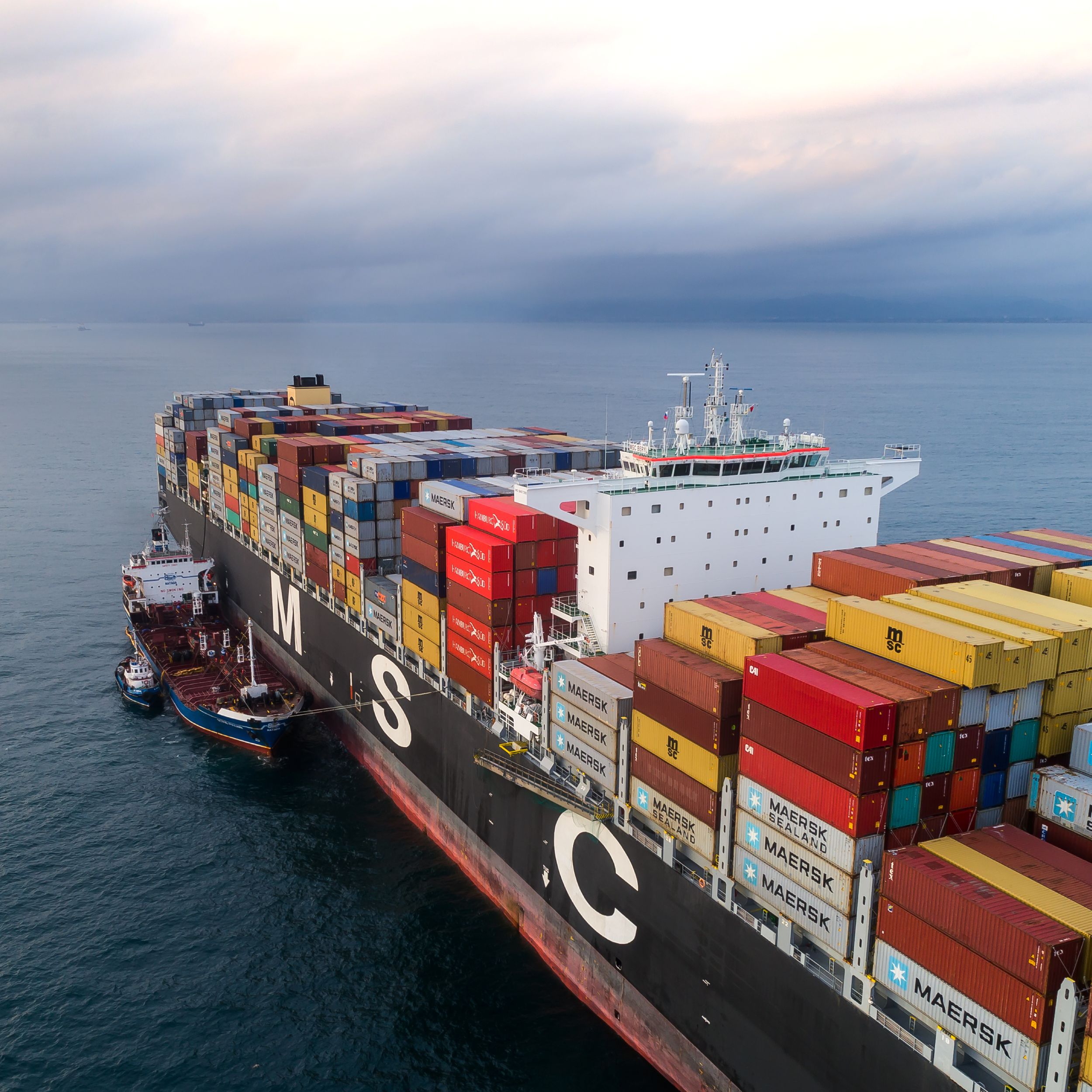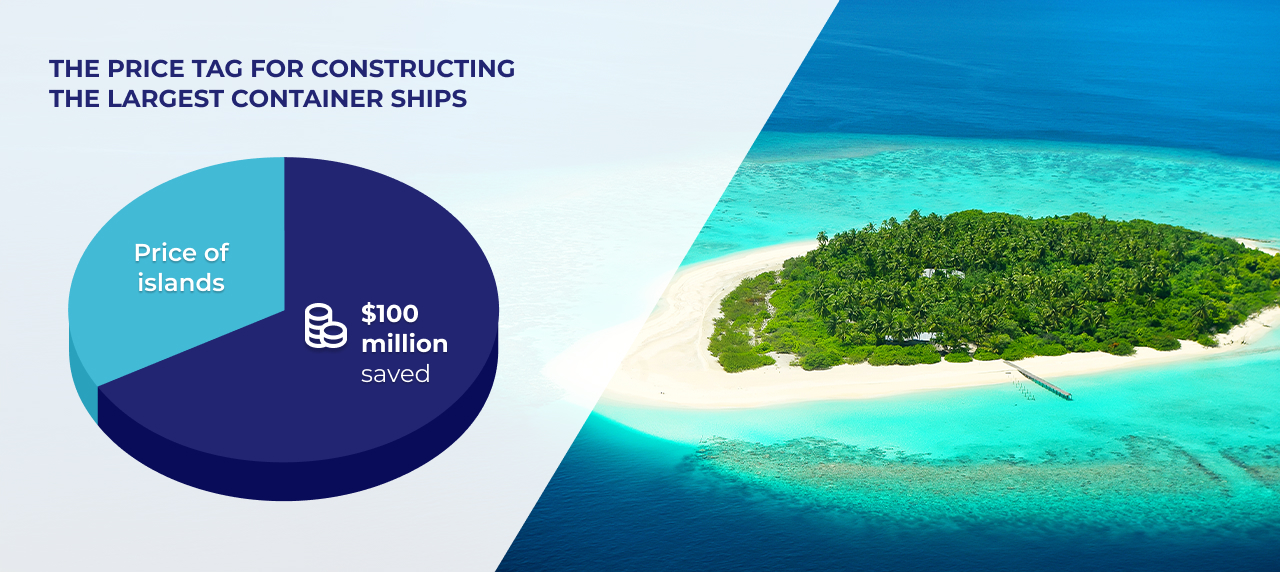
The ocean is a wonder, but have you thought about the ocean as an important part of global trade? Giant container ships crisscross these waters, transporting everything from your morning coffee to the latest gadgets. But beneath the surface lies a fascinating world with surprising facts and figures.
Prepare to be amazed as we explore the hidden wonders of ocean freight. This article is about the Top 10 amazing facts about ocean shipping.
How Many Containers There Are Currently Circulating?
An estimated 65 million shipping containers crisscross the globe. These standardized steel boxes aren’t spread out evenly. Instead, they’re concentrated in areas with high trade volume, constantly traveling aboard container ships and funneling through major ports. But this number can be much higher, as some estimations show that there could be more than 530 million containers worldwide.
Where Are the Most Shipping Containers Produced?
China’s hold on container production is undeniable. The top 3 Chinese manufacturers – China International Marine Containers (CIMC), Dong Fang International Containers, and CXIC Group – produced almost 82% of all containers globally, according to Drewry data.
Looking deeper, CIMC led the pack with 580,000 twenty-foot equivalent units (TEUs) for a 42% market share. Dong Fang International Containers and CXIC Group followed closely behind at 26% and 14% respectively, producing 358,000 TEUs and 200,000 TEUs.
How Many Shipping Containers Are Lost Every Year?

The World Shipping Council’s (WSC) 2023 Container Loss Report offers positive news for the shipping industry. In 2022, the report found only 661 containers lost at sea. This represents a remarkably low figure, accounting for less than one-tenth of one percent (0.00048%) of the estimated 250 million containers transported annually. Notably, the total value of cargo shipped each year exceeds $7 trillion.
While encouraging, the report also provides a broader perspective. Examining data from 2008 to 2022, the average number of containers lost at sea sits at 1,566 per year. This highlights the ongoing need for vigilance and safety improvements within the shipping industry.
What is the Lifespan of Shipping Containers?
The lifespan of a shipping container depends heavily on its usage and maintenance. Leasing companies typically depreciate containers used for frequent ocean voyages within 10-12 years. However, containers used for storage or on land can last significantly longer, with a general lifespan of 25-30 years. Well-maintained containers used for construction purposes have even been known to last 50 years or more.
Beyond their initial use on the high seas, retired shipping containers offer remarkable versatility. They can be recycled through melting and reprocessing the steel. Alternatively, with some modifications, these containers can be transformed into innovative structures like homes or portable offices.
Finally, a container’s lifespan depends on its condition and the environment it is used. While designed to withstand harsh weather, exposure to moisture, particularly in salty or wet climates, can accelerate wear and tear. To maximize lifespan, storing containers off the ground helps prevent moisture accumulation at the base, promoting long-lasting durability.
How Many Merchant Ships Are There?
The global merchant fleet comprises 118,928 vessels, with a total gross tonnage (GT) of 1,479,783 thousand GT. Container ships represent 4.64% (5,517) of the total fleet, contributing 17.97% (265,892 thousand GT) to the total gross tonnage. Oil and chemical tankers, on the other hand, constitute 12.03% (14,309) of the fleet, with a combined gross tonnage of 25.36% (375,220 thousand GT).
What Distance Do Cargo Ships Travel Around the Year?
According to the World Shipping Council, a large containership travels an astonishing distance in a typical year: three-quarters of the way to the moon. This translates to roughly 179,000 miles (appx. 288000 km), a figure that equates to circling the globe an impressive 7 times.
Who Are the World Leaders in Shipbuilding?
China
The People’s Republic of China stands as the world’s undisputed leader in shipbuilding, capturing an impressive 44.2% of the global market share. This dominance is further driven by China’s position as the world’s most populous nation and the largest economy based on purchasing power parity.
China’s shipbuilding industry has a diverse production capacity, encompassing a wide range of vessels such as tankers, gas carriers, and container ships. Notably, the country’s largest shipbuilding facilities are predominantly government-owned, signifying a strategic focus on this vital sector.
South Korea
South Korea, a technological leader in Asia and home to well-known corporations like Samsung and Daewoo, holds a dominant position in global shipbuilding. Major players in this sector include Hyundai Heavy Industries, Daewoo Shipbuilding, and Samsung Heavy Industries.
South Korea’s shipbuilding industry has become particularly crucial in the wake of the Russia-Ukraine conflict. The nation is a world leader in the production of liquefied natural gas (LNG) carriers, accounting for almost 90% of global output. This dominance is fueled by Europe’s surging demand for LNG as it seeks alternatives to cheap Russian gas in the wake of the ongoing conflict. The European Union’s recognition of this strategic importance is evident in their 2022 decision to block the merger of Daewoo and Hyundai, underscoring the potential market disruption such a consolidation could cause.
Japan
Claiming 17.6% of the global ship construction market, Japan remains a prominent player in the shipbuilding industry. This strength is complemented by Japan’s status as a leading technological innovator, ranking alongside economic powerhouses like the United States.
Beyond its contemporary effectiveness, Japan has a rich shipbuilding history. The nation was among the first to develop aircraft carriers, a technology that proved instrumental during World War II. Despite the industry’s setbacks in the aftermath of the war, Japan’s shipbuilding sector mirrored the nation’s overall economic recovery, exhibiting remarkable resilience and surpassing pre-war production levels.
What is the Largest Container Ship in the World?
The honor of the world’s largest container carrier has shifted to the MSC Irina. Commissioned in 2023 and sailing under the Liberian flag, this giant has an impressive capacity of 24,346 TEUs (twenty-foot equivalent units). With a length of approximately 1312 ft (399.95 meters) and a molded width of 201 ft (61.3 meters). MSC Irina is a so-called Ultra Large Container Ship (ULCS).
Before entering service, the vessel underwent successful sea trials in February 2023. Following these trials, she was transferred to Zhejiang Zhoushan Shipyard for final outfitting. The official launch of the MSC Irina occurred in March 2023.
How Much Does It Cost to Build a Cargo Ship?

The price tag for constructing the largest container ships can exceed $200 million. To put this immense sum in perspective, consider the following:
- Elon Musk can build 955 large cargo ships with his fortune
- It is 4 times more than the GDP of Tuvalu and $49 million more than the GDP of Nauru
- You can buy islands in each of these places: Australia, the Bahamas, Belize, Brazil, Chile, and Croatia, and you’ll have around $100 million left
- You can buy 259 John Deere Model 9RX 640 tractors
Moreover, the container ship construction process typically takes three years, with the initial design and planning phase lasting 12-16 months.
What is the Percentage of Cargo That is Transported by Sea?
Consider the everyday items surrounding you – the coffee you sip, the phone you hold, or even the chair you sit upon. It’s highly likely that these goods, along with countless others, embarked on a remarkable journey before reaching your doorstep. Packed into standardized containers and transported aboard massive ocean vessels, these products traveled thousands of miles from their origin countries.
An estimated 90% of the world’s traded goods rely on maritime transportation. Within this wide network, a staggering 60% are carried in large steel containers. These containers hold everything from imported fruits and electronics to appliances, while bulk commodities like oil and grains are typically transported directly in the ships’ hulls. The volume of goods transported in shipping containers – is approximately US$14 trillion.
Conclusion
The facts and figures we’ve explored paint a picture of the complexity of ocean freight. From the number of containers crisscrossing the globe to the incredible distances traveled by cargo ships.
As you’ve seen, ocean freight is a world of efficiency, that is fueled by innovation and technology. But navigating its complexities can be a challenge.
Whether you’re dealing with oversized or heavy equipment, Atlantic Project Cargo has the knowledge and resources to help you. So, the next time you wish to ship a large or oversized item – contact us. Our experts will guide you through the world of ocean freight and ensure a smooth and successful journey for your cargo.
Read More


